Is CDC Being Too Cautious?
Underplaying the value of vaccination is counterproductive.
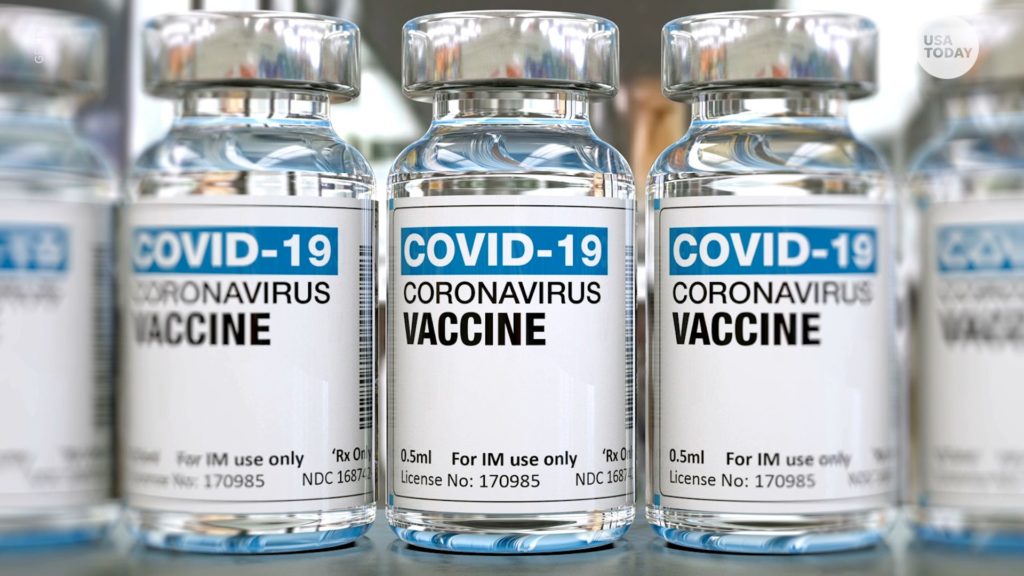
Many Americans, including my OTB colleague Steven Taylor and myself, have received our first doses of the COVID vaccine. It’s quite possible that we’ll have most of the population vaccinated by mid-Spring. But the Centers for Disease Control is still hesitant to project anything like a return to normalcy.
CBS News notes that new guidelines are expected soon:
The Centers for Disease Control and Prevention is finalizing guidance aimed at clarifying what Americans who have received COVID-19 vaccines should and shouldn’t do, according to two sources at the agency familiar with its drafting.
The upcoming guidance, first reported by Politico, is expected to include that fully vaccinated individuals should be able to gather in small groups with other people who have also been vaccinated. The CDC currently does not recommend in-person gatherings with the general public, saying “gathering virtually or with the people you live with is the safest choice.”
Even for people who have been fully vaccinated, other mitigation measures will still be recommended, including wearing a mask in public and social distancing.
Rather obviously, it’s far too soon for even those who are fully vaccinated to resume fully normal activities, simply because too few of the people they’re likely to encounter are also vaccinated. While I personally feel reasonably safe after the single dose, neither my wife nor my children are even scheduled for vaccination at this point. And, since there’s no way for strangers to know who’s vaccinated and who’s not, continuing to wear masks in public is simply common courtesy right now.
Still, being hesitant to declare that fully vaccinated people should feel free to socialize with other fully vaccinated people strikes me as absurdly cautious and even counterproductive. Sure, we don’t yet know exactly how well the various vaccines work over time, much less against newer strains of the virus. But we’ve got a pretty good basis for thinking that vaccinated people are relatively safe and, at worst, are likely to experience only mild symptoms of the disease if they’re somehow infected.
Given polling showing roughly a third of Americans are at least hesitant to get vaccinated—and that we really want to get every adult vaccinated as soon as we can—messaging that there’s no point in getting it because we’re still going to need like hermits is just bad public policy. I would much prefer that CDC simply explained relative risks and cautioned against known high-risk behavior rather than worst-case everything.
Again, the overall news is quite good. The US vaccination rate is among the best on the planet:
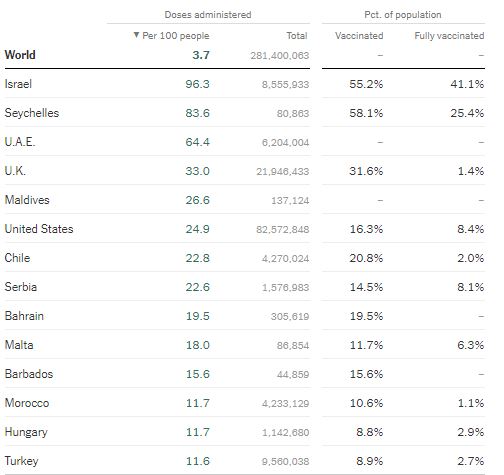
(I must admit, I don’t understand the disparity between the doses/100 people, the variable I used to sort the data, and the vaccination percentages.)
We should continue to race to get everyone vaccinated with a promise of returning to something like a normal life afterwards.

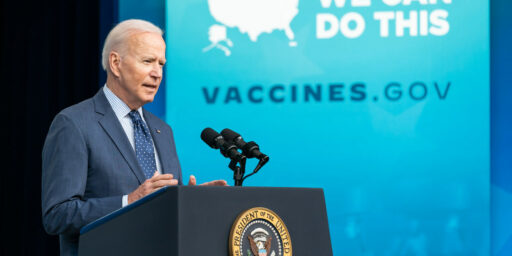

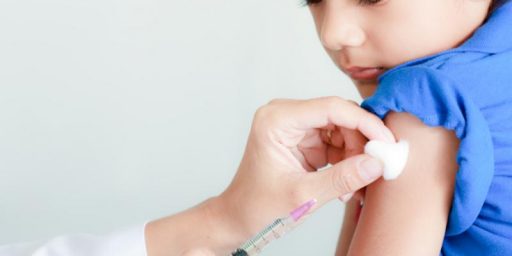
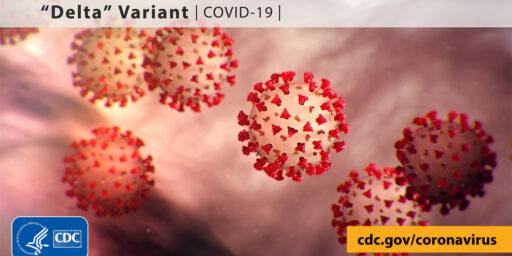
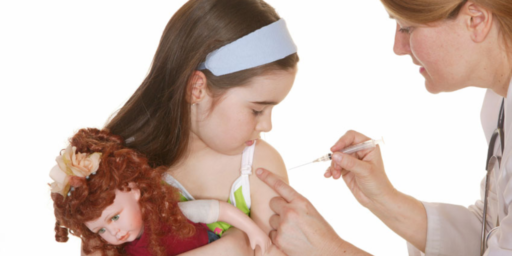
Second Pfizer yesterday. Done and done.
The risk in the CDC being too cautious, is that they will lose the audience and risk becoming the proverbial street corner preacher, proclaiming the end is near, while no one listens to him.
I’ve received my second dose of Pfizer a week ago, and should be at full strength, frankly, I’m looking forward to doing some abandoned activities, with due precautions. Next week, I’ll likely have lunch on day at a local sandwich shop and perhaps spend an hour at a local coffeehouse, assuming it isn’t crowded.
Part of life is managing risk and to do that intelligently, realistic information from, what should be reliable sources, is needed
“I would much prefer that CDC simply explained relative risks and cautioned against high-risk behavior than worst-case everything.”
So would I. So would I.
The danger isn’t just that the CDC’s policy of extreme over-caution will finally lead even reasonable, intelligent people to exasperation–and non-compliance–but that it encourages conspiracy theories, such as the one that claims COVID is an excuse to enslave the population, starting with permanent mask mandates and permanent stay-at-home orders.
@Sleeping Dog: That’s where I am on all this. And it’ll be way safer even a month from now, as millions more will be vaccinated.
I don’t think they are being overcautious. The vaccine doesn’t prevent you from getting COVID and in turn becoming contagious, it helps your body fight the disease once you have it. You could feel fine but still spread it to your wife and kids. From what I’ve read, almost no vaccine is a sterilizing vaccine, which renders you unable to get the disease in the first place or keeps you from spreading it.
@MarkedMan:
Right. And CDC should absolutely get that word out. But that’s a very different thing than hemming and hawing about whether fully vaccinated people can risk socializing with other fully vaccinated people.
The CDC understands the average person doesn’t really get what vaccinated means. It doesn’t mean 100%. MMR has a fail rate of about 4% and hi y’all I’m one of them! Several documented tries and negative titres later, it didn’t take in me. Just because you got a shot in the arm doesn’t guarantee protection – you can be one of the unlucky few it refuses to work on. It’s better to keep masking and isolating till the case load goes down and chances of finding out how lucky you are drop significantly.
The problem is we aren’t going to have normalcy because we have a significant portion of the population that’s refusing to vax. We could only walk around as fearless as we did because not only was one personally protected but the disease itself wasn’t in circulation. Much like how we are seeing measles make a comeback, our modern normal life is predicated on the vast majority of the population not being vulnerable to a highly infectious disease. It helps prevent harmful mutations by limiting the pool of hosts. We’re already seeing variants pop up that are challenging our current meds. Add in human stupidity to the mix and it means we’re taking chances that risk our only weapon for no real reason other than people have ants in their pants.
Masks and social distancing are going to be a thing for smart people well into Fall. I’ve got a trip scheduled to FL in Sept and the whole fam is planning on staying masked even though most of us will have gotten our second shot by next week. Fall will be enough time to see how infection rates are doing but no chances considering how that state’s been acting. Spring is overly ambitious to pull a Mission Accomplished.
@MarkedMan:
My, very limited, understanding of the immune system, is that it really gets an infection once the adaptive part begins churning out antibodies, killer T-cells, and whatever else it does (I said “very limited”), and that this takes time. That’s why a cold lasts several days. It’s essentially over a day or so after antibodies kick in.
What vaccines do is kick-start the adaptive immune system, by letting it see the pathogen, or parts of it, before it’s really there. So, you don’t get sick, but you still get infected.
In the case of COVID specifically, even the necessarily abbreviated trials saw infections with symptoms, albeit mild, on people who got the full inoculation. transmission will go down in time as fewer virus is produced by people who are vaccinated, but it will take time. Combine that with the limited speed of the vaccine roll out, and precautions remain necessary.
Doses/100 looks like an incorrect label. If you look, the numbers shown are just a simple addition of the vaccinated and fully vaccinated, with the % signs removed. It appears the number is just the % of the population that has at least had the first jab.
The General American Public has not demonstrated a working understanding of the science, or an ability to correctly process medical information and guidance. We’ve behaved as a nation of toddlers, and now we’re wondering why the CDC is being cautious?
Thus far, very few employers have gone the route of requiring employees to be vaccinated. That means that we’re probably going to see a vaccination rate at/near, or perhaps slightly above, the annual flu vaccination rate…which isn’t anywhere near enough to eradicate covid from our country.
An awful lot of people have shown themselves to be stupid and selfish. I do not predict this will change.
And, frankly, things like this just add fuel to the COVID-is-a-conspiracy fire:
http://www.talkingpointsmemo.com/news/cuomo-aides-hid-higher-nursing-home-death-toll-in-rewritten-report
@Jen:
Vaccines work exactly the same way masks do: it’s how many people get vaccinated which protects everyone else.
Got my second shot two weeks ago today, my wife a few days earlier. We’ll continue to mask and observe precautions. As James says, it’s only courteous as others don’t know we’re vaccinated. And we wish to encourage a norm of mask wearing until this is pretty much over. But most importantly, we apparently can still spread the virus and we’ve been a pod with our son and daughter in law, who have no idea when they’ll be able to get vaccinated.
As I said, I’m vaccinated and continue to mask. When can we bitch about others free riding on our efforts to limit spread?
Just as an opinion, I’m inclined towards “We could try everyone being overly cautious” for a change. The same sort of argument as on the financial relief bill: we tried erring on the side of being too small in 2009 and 2020; we could try erring on the side of being too large for a change.
@James Joyner:
I think you are under the impression that being vaccinated means you can’t get and transmit COVID. The reason the CDC is not saying that it is safe for vaccinated people to interact without precautions is that they can still transfer the disease amongst themselves and then later transmit to someone who is unvaccinated and therefore unprotected. I’m vaccinated (or rather will be after I get my second shot), but I could still get COVID and transfer it to my wife or daughter. That scenario is like my worst nightmare. If I end up traveling for work I still plan on quarantining in the basement when I come back.
@Kathy:
*Exactly.*
This is precisely the issue we’ve been having in the US with measles. Before, with almost everyone vaccinated, the handful that couldn’t be vaccinated (risks, allergies to vaccine ingredients) or for whom the vaccine wasn’t effective (I believe KM falls in this category?) were protected because the illness didn’t have an opportunity to take hold and spread widely.
We aren’t going to get anywhere near the number of vaccinated against covid in the US that we need to have. Thus, CDC’s concerns and caution.
I think it’s going to be most interesting to see which airlines and which countries will require vaccination before travel and non-essential entry. All of my “freedom!” crowd friends tend to enjoy cruises, and I’d be shocked if the cruise industry doesn’t require vaccination before travel given how hard they were hit. I’m wondering who blinks first.
@MarkedMan: That’s a non sequitur. I literally noted that in the OP. The question is whether fully vaccinated people can safely socialize with other fully vaccinated people. The answer is almost surely Yes.
@James Joyner: James, I’m not arguing here, it’s just that I truly don’t understand what you are driving at. What does “safely” mean in this case? If you mean safe for the vaccinated, excluding their unvaccinated friends, coworkers and family, then yes, sure. But I’m not sure why the CDC would say that. Their writ is to encourage people to do what’s best for everyone.
Or am I misunderstanding your point?
I agree that vaccines are being undersold and that it’s dumb. You don’t tell people to wait in line to get a shot, then come back 21 days later for a second shot that might make you feel like crap for a day or two, and when you’ve done that it won’t make your life any better.
Covid kills old people. It occasionally kills a few younger people, but the big numbers are age-driven. Get everyone over the age of 65 vaccinated and the death toll drops like a meteorite aiming for a T. Rex. Take away the hospitalization and death of old farts and I’m sorry but the numbers just aren’t very frightening. There are risks in life and there is no way to reduce any risk – including Covid – to zero.
It was all but impossible to get people to take precautions when the hospitals were overflowing. As the death rate drops, mask and distancing compliance will fall, and there’s nothing anyone can say that will change that.
I’m fully charged up on Moderna and will continue to mask and distance, but that’s easy for a near hermit. People have jobs. They have families. They even have friends. It’s time for some cautious optimism not ever more gloom and doom.
Gov. Ned Lamont is introducing “an expansive reopening plan” for Connecticut. Starting March 19, restaurants, retails stores, sports venues, and houses of worship may operate at full capacity, and the travel ban will be lifted.
Mask and social distancing requirements will remain in place.
@James Joyner:
As with many things, it depends.
Is it safe for the fully vaccinated people? Yes.
The question then is, how many not-yet-fully-vaccinated people do they come into contact with?
A real to life example. My husband will almost certainly be fully vaccinated before me. His mother is also fully vaccinated. So, can the two of them hang out at a local restaurant?
I’d say no. Why? Because *I’m* not yet vaccinated, and likely won’t be until April at the earliest. While their risk is extremely low, either one of them could become infected and bring the virus home.
Until the amount of covid circulating comes way down, fully vaccinated people should behave as though they have the potential to be asymptomatic carriers.
And, I know that you made exactly this point in your post here:
@James Joyner: “Rather obviously, it’s far too soon for even those who are fully vaccinated to resume fully normal activities, simply because too few of the people they’re likely to encounter are also vaccinated.”
I guess I am baffled at what is considered “safe” in this scenario. As long as the virus is still in wide circulation, there’s a safety risk.
@James Joyner: True enough. Now, if we weren’t 6 or more months from that fact mattering…
The general public don’t understand asymptomatic transmission. Good luck explaining that if you get the vaccine you won’t get sick but you can still get infected and spread it
@gVOR08: I agree, which is why I think the CDC is just going with the cautious tone excerpted above.
As a PR person, it’s certainly how I would recommend they would approach this. If something in the science is too complex to explain, focus on the behavior you want to see. That’s exactly what they are doing.
@Jen:
Yes, but the danger that represents lies in appearing to give arbitrary orders: “We know best. Just do as we tell you to do.” Most adults react badly–in varying degrees–to being treated as if they were recalcitrant children. And if you imply that they’re too stupid to understand the science, they’ll really get enraged.
The science doesn’t actually seem that difficult to me. Why not say: “Look, we know this is a pain in the ass (substitute your euphemism of choice). But it’s essential to realize that even after you’ve been fully vaccinated, you may still host the virus and be able to transmit it to others. So for safety’s sake, observe the mask and social distancing requirements. The more you do, the sooner this will be over.”
@CSK: Which is almost exactly what this CNN piece suggests that the CDC guidelines will likely say, so I’m now wondering what we’re even talking about here.
People by and large don’t comprehend biology and medicine.
Prior to the trump pandemic, my biggest worry was antibiotic resistant bacteria (now it’s my second biggest worry). The main driver of this problem is probably the extensive use of antibiotics in cattle and poultry feed (they help them gain weight faster), but a close second is the misuse of antibiotics, for instance by taking them for the common cold.
It’s been decades since the discovery of Penicillin, and people still don’t know what it, and other drugs of its kind, are actually for. the current pandemic has been around only a year or so, and people haven’t grasped it any better.
@Kathy:
Wait. What you say about the overuse of antibiotics is true in general, but they’re available by prescription only, at least in the U.S., and no doctor would prescribe them for a cold.
@CSK:
Mostly true. But that points to another problem: people who don’t complete the prescribed course, and have pills left over.
I said mostly true, because many doctors will prescribe antibiotics, “just to make sure,” for conditions which could be viral as well as bacterial. Most minor ailments of either sort will clear up on their own, or rather by immune system action, so people think the pills worked.
there’s a third problem: America is not the only country in the world. In Mexico antibiotics require a prescription, but plenty of pharmacies will sell them for the asking. Largely it depends on how good oversight is, or how conscientious the pharmacies are.
Opioids are really hard to get. Lately so are drugs containing chloroquine. but antibiotics not so much.
BTW, down here we don’t get prescriptions filled. We get the manufacturer’s box or bottle, with however much medication is in them. This also means we get leftovers.
@Kathy:
Yes, I know that different countries have different regulations regarding the dispensation of pharmaceuticals.
Here’s a thought experiment about vaccines:
If vaccines rendered everyone immune to infection rather than to disease from a given pathogen, then eradication of harmful pathogens would be very easy. Instead what seems to happen is that most pathogens can survive well enough as a population, even on the face of high rates of vaccination, and helped, no doubt, by the few who cannot take a vaccine, or for whom the vaccine does not work, and the increasing number of morons refusing to take any vaccines.
That said, it’s worth remembering that eradication of a pathogen requires a global effort. Otherwise, reservoirs of the pathogen will remain here and there, and move around with infected people. That’s why Polio hasn’t been eradicated yet.
Oh, some pathogens also infect animals, and survive that way. We can, and mostly do, vaccinate domestic animals and livestock, but not wild animals.
@Jen:
I agree with this. One thing I’m struggling for (perhaps foolishly) is the guiding principle. After all, the GAP has a poor working understanding of a lot of things that carry severe negative externalities….and yet we “accept” this as part of life.
What, if anything, sets COVID apart? Is it merely that COVID is the newest example and its uniqueness on this matter will wane (and our acceptance of it rise), only to be replaced by the next thing? I fear that is likely, which is “fine” as far as it goes, but it hardly makes for a good principle.
Do you have a different take that would help me think about this differently/better? Perhaps that’s what you were getting at in your response to gVOR08.
I am in an industry that is taking Covid very seriously. Yesterday, the head of our studio told us that in their estimation, based on the worldwide current numbers and projections, we (as in the US) is about 48% finished with Covid. We’re not even halfway there yet. They’re preparing us for at least 18 more months of masks, social distancing, and all the other risk mitigation factors we’ve put in place over the past six months.
They think we won’t return to “normal” until 2023 at the earliest. That’s what I’m preparing for.
On a personal note, due to Covid and my past record for getting the flu, I have learned alot from the pandemic:
1. I will never fly again without a mask, if not two masks.
2. I will keep my distance from people in social settings when possible.
3. I won’t put my hands on so many things in public, and if I do, I will sanitize or wash my hands immediately.
P.S. – Two doses of Moderna. Second one kicked my ass for a day. Just lethargic, no fever or pain. Just zero energy. Spent most of the day sleeping on a couch at work.
@Mimai: Good question.
I’m not sure that there is an answer, which is a bit depressing. The bottom line is that it’s unrealistic to expect that the huge swaths of the public that don’t have the time/interest/capacity to learn more about science or develop critical thinking skills to magically decide it’s important.
We’ve P.T. Barnum-ed our way into this state, and CSK is correct in that adults hate it when you treat them like children, but then those same adults get pissy when you try and explain something that’s over their heads, because no one likes to feel dumb.
Thus, we end up speaking to the lowest common denominator and hoping that enough of it sticks to protect public health.
@Jen: It is indeed a double bind. Made all the worse because it’s a deadly one.
Although it would be preferable, and likely helpful re COVID, I don’t think we need huge swaths of the public to invest time/interest/capacity to learn about science or develop critical thinking skills. Such things are not prerequisites for many (most?) related issues. Alas, the things that often serve in their place (e.g., shared values/norms) are in short supply these days, hence our current predicament.
Ps, I very much enjoyed your verbing of P.T. Barnum!